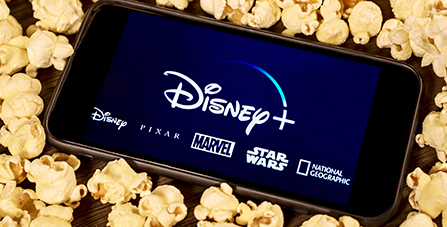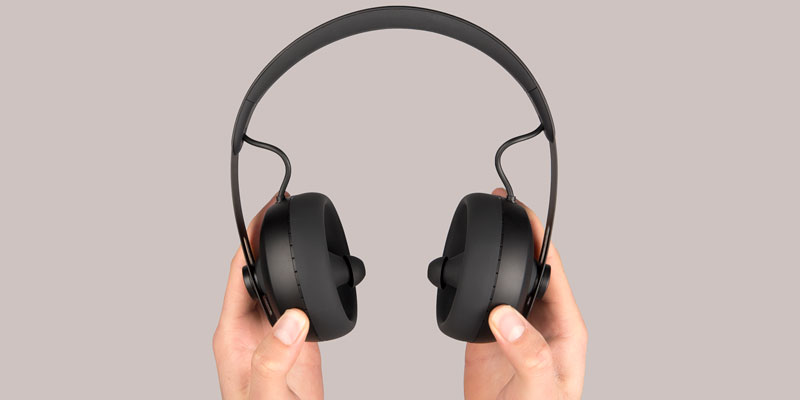Grow your business with the Discover newsletter
Logistics advice & insights straight to your inbox
Subscribe now
From the good old days of newspaper boys, timetabled deliveries have grown exponentially. And now, whether it’s razors, makeup, or even furniture, the rise in regularly-received goods and services – thanks to a small (or large) monthly fee – have seen all sorts arriving on doorsteps at scheduled intervals. Subscription models are, of course, something we’ve covered before on Discover, but a lot can change in a year.
New research1 on the phenomenon has revealed that in the UK, an estimated £25bn is spent each year on unused subscriptions – an average of £39 per person per month. It's gym subscriptions that are the biggest culprit, but there are plenty more services cashing in on those who are unwilling to cancel. In fact, in the States, US$348 is wasted every year by those who have unused entertainment subscriptions2.
Jennifer Savary, an assistant professor of marketing at the University of Arizona’s Eller College of Management and co-author of ‘The Uncertain Self: How Self-Concept Structure Affects Subscription Choice’3, has written extensively on the subject, in an attempt to understand the psychology behind subscriptions.
"We know that people don't like to waste money but, for some reason, unused subscriptions are catching us out. I am particularly interested in why people want to be seen in a certain way, so I approached this research through that lens."
Of course, the ease with which people can sign up – with free trials a no-brainer for both buyer and seller – means that the rise in subscriptions is showing no signs of stopping. But why are so many people signing up for so many services?
"When you separate payment from consumption, it doesn't hurt so badly because there’s not a specific moment of monetary transaction – that’s a benefit. There's also research looking at what we might call a ‘cognitive miser’. People want to minimize their effort and because it's hard to cancel subscriptions, they often forget."
There's an established concept in psychology called 'self-concept clarity', which relates to how certain people are about their identities. Having a subscription to a product or service helps reflect who a person believes themselves to be – whether that’s a vegetable box, headphones, or something more obscure – and that’s what makes subscriptions services appealing. Some people who subscribe to The Economist may never read it, but wouldn’t dream of cancelling, as it strips away part of their identity.
Self-identity is ever-changing, and can be impacted by significant life events. Not just things like moving house or getting married but wider events such as the current Brexit-related uncertainty in the UK, for example. At these times, people’s sense of self can be brought into question – and these moments present an opportunity for brands, encouraging potential customers to align to the right type of subscription to help people feel more in control. Take Kindur’s SmartDraw service as an example4. The retirement planning company is leaning into the subscription business model to help older people manage their retirement funds. Allowing customers to create a monthly retirement paycheck, its aim is to make managing finances in retirement as simple as when one was working.

With subscription businesses growing in the e-commerce market by more than 100% annually between 2013 and 20185, according to McKinsey & Company, this model shows no signs of slowing. But what keeps people coming back? According to Whistl6, 60% of Britons say that they sign up for subscription services to save money – while 45% do so for the convenience and 30% for the added perks or benefits, such as with Amazon Prime.
"32% of Americans intend to sign up to a subscription box in the next six months"7
Of those who subscribe, 22% value personalized experiences, according to McKinsey. Epsilon8, meanwhile, has found that 80% of people are more likely to make a purchase if a brand offers a personalized experience, and Deloitte9 discovered that 20% are willing to pay a premium for a personalized product. Which leads us on to Nura, a company renowned for offering premium headphones that automatically adapt to each user's hearing profile.
Through NuraNow, it’s offering the same quality on a subscription basis, removing the initial price barrier. Subscribers pay a monthly fee of between US$9 and US$15, with an up-front fee of up to US$100. After two years, subscribers receive a new pair of headphones, and can keep the old ones, too. Delivered as an impeccably-packaged product, users also receive exclusive content from artists associated with Nura, access to competitions for concert tickets, free music downloads, and exclusive merchandise. Having piloted the idea in Australia, where it sold out in less than a week, Nura has now expanded to the US and UK. Although it should be noted that when the subscription is stopped, all the products have to be returned…

Despite their popularity, research from Muso10 has suggested that we may have reached ‘peak subscription’ – and there’s nowhere more prevalent for this than the increasingly competitive streaming platform sector. Between an overload of choice and competitive pricing structures, brands are having to work even harder to keep viewers loyal. Priced at just US$6.99 per month, Disney+ offers access to an ad-free catalogue of Disney-owned movies and TV series, and it’s set to shake up the industry by either moving viewers away from traditional viewing or snatching a share of subscribers from rival services.
“A lot of times, [companies are] paying 2-4 months’ worth of revenue upfront to acquire a customer, and they need that 5th, 6th, 7th month of renewals to actually make any profit on that customer.” Amir Elaguizy, Co-founder, Cratejoy
McKinsey & Company identified three main types of subscription service:
And, in a survey conducted by Clutch11, the five most popular subscription services were:

Subscription comes with its own set of challenges – especially when the items you provide are bigger, such as with furniture company, Feather12. And even if your products are smaller, logistics at scale can be a challenge, so it’s important to choose a partner who can accommodate your offering. Subscription services do offer a more enhanced ability to predict stock requirements – which can be hugely beneficial. Regardless of all these, it’s also crucial to partner with a logistics company who know cross-border trade when you’re looking to grow globally.
DHL Express operates in over 220 countries and territories, and therefore offers your business huge potential global expansion – promising door-to-door delivery and the ability for customers to track their shipment, wherever it may be. DHL Express can also provide paperless clearance for getting your goods through customs faster, preventing any potential delays which may impact a subscriber’s experience and their likelihood to stay on.
Coupled with the ability to offer time-definite delivery, opening an account with DHL and subscribing to their services means that, contrary to what you’re giving consumers, there’ll be no surprises – just reliable, efficient shipping you’ll certainly want to stick with long term.